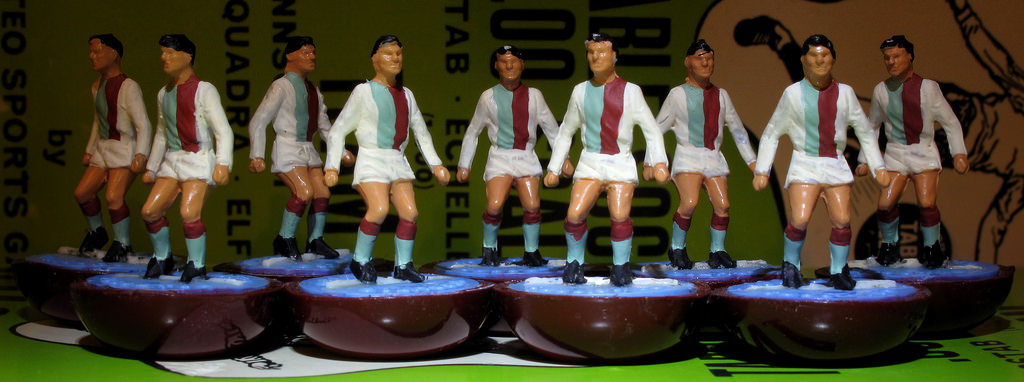Remembering Subbuteo
Long before FIFA or PES filled screens and headlines, a very different football game adorned living rooms nationwide. Whether from Caithness or Cornwall, young or old, rich or poor, there were no barriers to entry. It delivered the same giddy highs and devastating lows as any modern sports game, on a much lower budget. That game was Subbuteo and it was the original synthesis of sports and gaming.
First invented in 1947, Subbuteo is a table-top football board game in which players compete against one another to score, complete with a plastic ball and two teams of flickable plastic footballers. Beyond the plastic facsimiles of famous footballers, the rules really just resemble that of everyday football. Think of it like an office procrastination game on acid. Or a very aggressive form of tiddlywinks. In many ways its name was a bit of an accident. Originally wanting the name Hobby, Subbuteo’s creator, Peter Adolph couldn’t get trademark on the name. Instead he went for Subbuteo, so named for the latin Falco Subbuteo – a bird of prey commonly known as The Eurasian Hobby. Maybe not an accident then, more of a wry joke. What’s not to love!
Think of it like an office procrastination game on acid. Or a very aggressive form of tiddlywinks
If you haven’t heard of Subbuteo, congratulations on living under a rock for the last couple decades. In all seriousness, it’s hard to ascertain exactly how big a cultural impact this game has had. It is certainly big however. At its peak the game was selling 300,000 copies a year domestically, and was surrounded by a professional players circuit. One such player, 16 year old Justin Finch, insured his right hand for £160,000, in the build up to the 1987 Subbuteo World Cup (yes you read that right). It’s referenced across film and TV, from Fever Pitch to Black Books, to the lyrics of bands like Massive Attack and The Undertones, and even almost had a 2 metre statue erected in its honour by Cambridge City Council. Simply put Subbuteo is subtly interwoven into our cultural DNA.
Despite this all good things must come to an end. Just a few years into the new century, Hasbro announced it was discontinuing the brand. In recent years it has had something of renaissance, but compared to the sales figures FIFA garners every year, it might as well not have.
What better frontispiece is there for the modern game then, where teams are businesses and players data points, than the sprawling corporate beast of EA, I wonder
In may ways it is a beautiful microcosm of how football itself has changed over the years. Subbuteo, is the simple, Shankly trinity style that defined pre modern football. What better frontispiece is there for the modern game then, where teams are businesses and players data points, than the sprawling corporate beast of EA, I wonder.
Its very simplicity is the antithesis of modern eSports culture. In console sports games there’s this mad-dog myopic focus on hyper realism at all costs. Playing these kind of games is all well and good but something feels empty, something feels fake. For all their attempts at immersion, the imperfect reality of the great game, its soul many one might say, is lost. The beautiful irony it seems is that nothing gets as close to “the real”, as those fake plastic figurines on that awful faux felt pitch.
At least that’s how it feels for me. Maybe then before picking up a controller for yet another painful Ultimate Team rerun, this time gather some mates, and go back to where it all began.

Comments
Comments are closed here.